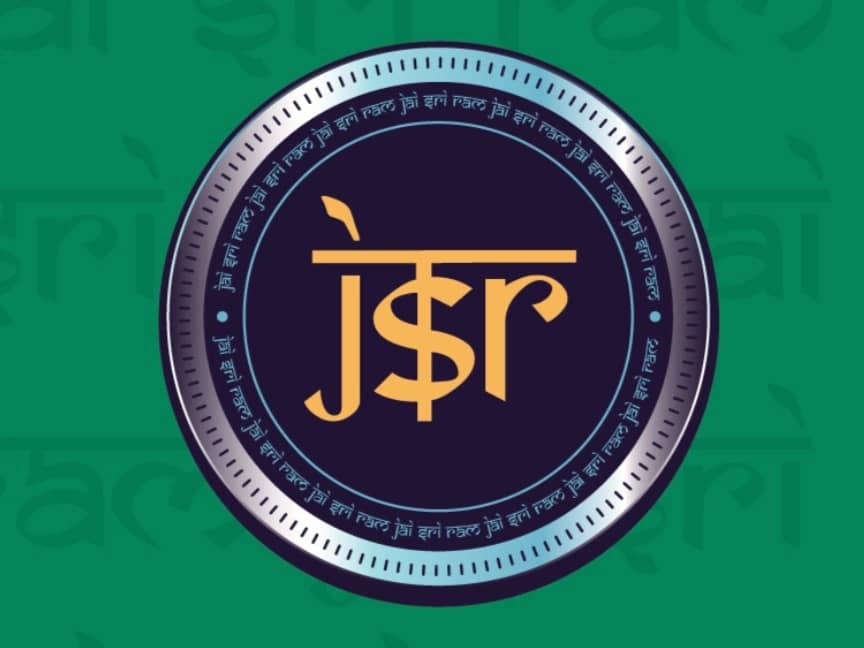위키 구독하기
Share wiki
Bookmark
JSR
JSR
JSR은 인도 사용자들을 탈중앙화 생태계로 유입시키기 위해 고안된 "chant-to-earn" 모델을 도입한 Web3 게임 프로젝트입니다. 이 프로젝트는 전통적인 인도 찬트(chant) 관행과 play-to-earn(P2E) 메커니즘, 밈 문화, 탈중앙화 금융을 결합하여 주로 Telegram 메시징 플랫폼의 게임을 통해 운영됩니다. [1] [2]
개요
JSR 프로젝트의 핵심 목표는 특히 Z세대를 중심으로 인도 시장에 Web3 기술을 더욱 접근 가능하고 문화적으로 관련성 있게 만드는 것입니다. 이 프로젝트는 루도(Ludo)나 Teen Patti와 같은 인기 게임들처럼 문화적 공감대를 형성하는 고품질의 몰입형 소셜 게임에 대한 인도 게임 시장의 수요를 파악했습니다. 젊은 인도인들 사이에서 증가하는 암호자산에 대한 인식과 암호자산 획득 및 사용과 관련된 기술적 장벽 사이의 간극을 해소하는 것을 목표로 합니다. [3] 핵심 개념은 영적 수행인 찬트(chant), 특히 "Jai Shri Ram"이라는 만트라를 간단한 탭 기반 모바일 게임으로 변환하는 것입니다. 이 "Chant-to-Earn" 모델은 게임 내 활동에 대한 보상을 제공하여 찬트(chant)의 정신적, 영적 이점을 홍보하는 동시에 실질적인 인센티브를 제공합니다. [4] [2]
JSR은 인도 시장을 위한 커뮤니티 중심의 "밈 혁명"으로 자리매김하며, 인도의 광대한 디지털 결제 사용자 기반을 활용합니다. 전략의 핵심은 3억 5천만 명 이상의 사용자를 보유한 널리 채택된 시스템인 인도의 통합 결제 인터페이스(UPI)를 통합하여 게임 내 구매를 위한 친숙하고 간편한 법정화폐 온램프를 만드는 것입니다. 이 프로젝트의 거버넌스는 탈중앙화 자율 조직(DAO)으로 구성되어 자체 토큰 보유자가 주요 의사 결정에 참여할 수 있도록 합니다. 이 프로젝트는 2024년 10월에 소셜 미디어 활동을 시작했으며, 이후 게임 기능과 커뮤니티 이니셔티브에 대한 발표가 이어졌습니다. [1] [3]
제품
JSR 프로젝트의 주요 제품은 "Chant-to-Earn Game"이라는 Telegram 기반 게임입니다. 이 게임은 봇 인터페이스(@jaisriram_io_bot)를 통해 접근할 수 있는 Telegram 미니 앱으로 운영됩니다. 이 아키텍처는 사용자가 Apple App Store나 Google Play Store와 같은 기존 앱 스토어에서 별도의 애플리케이션을 다운로드할 필요가 없어 발견성과 사용자 접근성을 간소화합니다. 게임 플레이는 찬트(chant) 행위를 시뮬레이션하는 간단한 탭 기반 활동을 중심으로 간단하게 설계되었습니다. 이 인터페이스를 통해 사용자는 게임 내 동작을 수행하고, 보상을 얻고, 순위표에서 자신의 진행 상황을 추적하고, 프로젝트의 생태계와 상호 작용할 수 있습니다. [4] [2] [3]
기능
JSR 플랫폼은 사용자 참여를 유도하고 생태계 참여를 용이하게 하도록 설계된 여러 기능을 통합합니다.
- Chant-to-Earn (C2E) 게임플레이: 이것은 프로젝트의 핵심 메커니즘입니다. 사용자는 반복적인 탭이 찬트(chant) 행위를 나타내는 탭 기반 게임에 참여합니다. 이 활동을 통해 CHANT 코인과 경험치(XP)를 얻을 수 있습니다. [1] [2]
- UPI 통합: 이 플랫폼은 인도의 주요 결제 시스템인 통합 결제 인터페이스(UPI)를 통합합니다. 이 기능은 사용자가 친숙한 결제 방법을 사용하여 토큰이나 게임 내 자산을 직접 구매할 수 있도록 원활한 법정화폐 온램프를 제공하도록 설계되었습니다. [3]
- 순위표: 게임 내 활동과 수입에 따라 플레이어를 순위 매기는 경쟁적인 순위표 시스템이 게임에 통합되어 있습니다. 이 기능은 사용자 경쟁과 참여를 장려하기 위해 홍보되었습니다. [2]
- 게임 내 부스트: 플레이어는 게임 내에서 부스트를 사용하여 CHANT 코인의 수익 잠재력을 극대화할 수 있습니다. [1]
- 데일리 스핀: 하루에 한 번 가상 휠을 돌려 보너스 CHANT 코인을 획득할 수 있는 기능으로, 매일 참여하도록 유도하는 인센티브를 추가합니다. [1]
- 추천 시스템: 이 프로젝트에는 새로운 회원을 게임에 초대하는 사용자에게 추가 CHANT 코인을 보상하는 추천 프로그램이 포함되어 있습니다. 2024년 12월에는 커뮤니티 성장을 장려하기 위해 추천 경연 대회가 개최되었습니다. [1] [2]
- DAO 거버넌스: 프로젝트의 자체 토큰인 $JSR 보유자는 다가오는 토큰 스왑 거래와 같은 프로젝트 개발 및 전략적 결정과 관련된 제안에 투표하여 거버넌스에 참여할 수 있습니다. [1]
- 토큰 판매 조기 접근: $JSR 보유자에게 중요한 유틸리티는 프로젝트의 토큰 스왑 거래를 통해 공개적으로 상장되기 전에 다른 밈 토큰의 사전 판매에 독점적으로 조기 접근할 수 있는 것입니다. [1]
잘못된 내용이 있나요?
